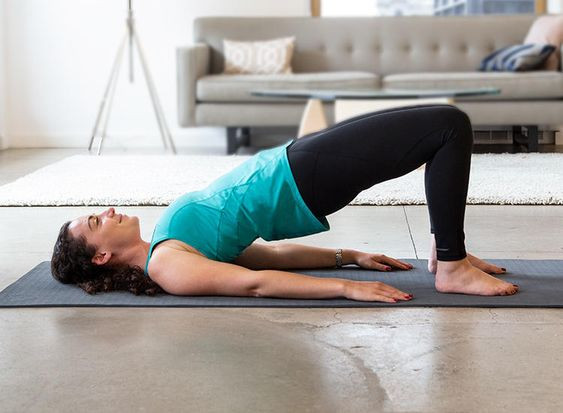
How to deal with back pain at home
0
Back problems have a huge number of people – weight, age and love of health often do not play any role here. X-Fit expert, fascial therapist, movement therapy instructor Anton Shapochka named some simple and clear tips that will help to cope with pain and discomfort.
Every day we make hundreds of elementary, automatic movements. In some cases, this plays into our hands, forming a certain skill – for example, when we learn to drive a car. But sometimes we become hostages of our own skills. Think about how often we follow the same scripts, be it thoughts, feelings, words or actions. Usual algorithms of actions form our movement patterns, which are always effective and safe from the point of view of natural biomechanics.
As a result of constant stress, emotional tension, lack of motor activity or incorrect load, blocks, clamps and injuries appear, triggers are formed points and developing myofascial pain syndrome. Our muscles and joints become less mobile. The body begins to function incorrectly, which subsequently leads to larger systemic disorders.
Sometimes pain and discomfort are so common that we stop noticing them. Only a doctor can determine the exact causes of discomfort – you should not make diagnoses and engage in self-medication if you are not a specialist. However, it is within our power to observe our own body and explore it. So, for example, the back often starts to hurt because we simply forgot how it should move. One of the pillars of body-oriented therapy, the founder of the somatic learning method, Moshe Feldenkrais, proposed the term “sensorimotor amnesia.” This is exactly the case we are talking about now. Over time, we forgot how our back moves, its chronic tension gives rise to many unpleasant sensations.
If you have been bothered by pain for many years, for example, in the lower back, then most likely you have excessive deflection in this area, or, on the contrary, excessive compaction, characterized by a strong contraction of the muscles on both sides of the lumbar spine. We forgot that the lower back is relaxed, more vertical, and the main weight load can be evenly distributed on all vertebrae. If the pain has already become chronic, then thanks to the training of this zone, we will be able to develop neuroplasticity, overcome the effect of sensory-motor amnesia, and learn to move consciously. This, by the way, is what we pay special attention to when training with the X-Fit Smart Fitness system. The most important thing is to understand that any back exercises should be pleasant and comfortable: during their performance, the level of discomfort should not increase, you should not feel pain.
Exercise 1
< p>
We lie on our back, put one hand on the stomach, the other on the chest. Take a slow breath and listen to your feelings. What works more actively: chest or stomach? If you breathe through the chest, try to switch to belly breathing: on inhalation, the abdomen inflates, on exhalation, it retracts. Observe your breathing for 3-5 minutes, then go to the mirror and assess how much the position of the back and abdomen has changed, pay attention to whether the tension has decreased in the lumbar region.
To improve the work of the thoracic region, it makes sense to add in your daily yoga “cat” and “dog” complex.
Exercise 2

We lie on our back again, knees bent, feet close to the buttocks. We press the pelvis to the floor, then press the tailbone to the floor more tightly than other parts of the pelvis – we perform rolling in the pelvis area. At the same time, the lower part of the back will bend slightly, rising above the floor at the level of the waist, and then it will fall back down. The key to success in this exercise is slow, smooth movements. Thus, by relieving increased tension in the lower back, we improve blood flow in this area.
To make the exercise even more effective, you can work with the diaphragm, which is responsible for breathing – this way we also engage the spine, including its lumbar section .
Stretch

The next thing to pay attention to is the hip joint. If it does not function correctly, then with a high probability the lower back will feel increased tension.
In this case, basic exercises for stretching the back, front and inner surfaces of the thigh are useful. Notice how much easier your back will be if you stretch twice a day – morning and evening.
Abdominal muscles

The back is supported by the abdominal muscles, and if they do not work correctly, an additional load falls on it. After breathing exercises and improving mobility, perform small strength blocks to strengthen the deep muscles, for example, the bar – normal and lateral.
And finally: if you constantly feel discomfort or tension in the back area, definitely consult a doctor for an examination and only after that begin corrective exercises in accordance with the specialist's recommendations.









Leave a Reply